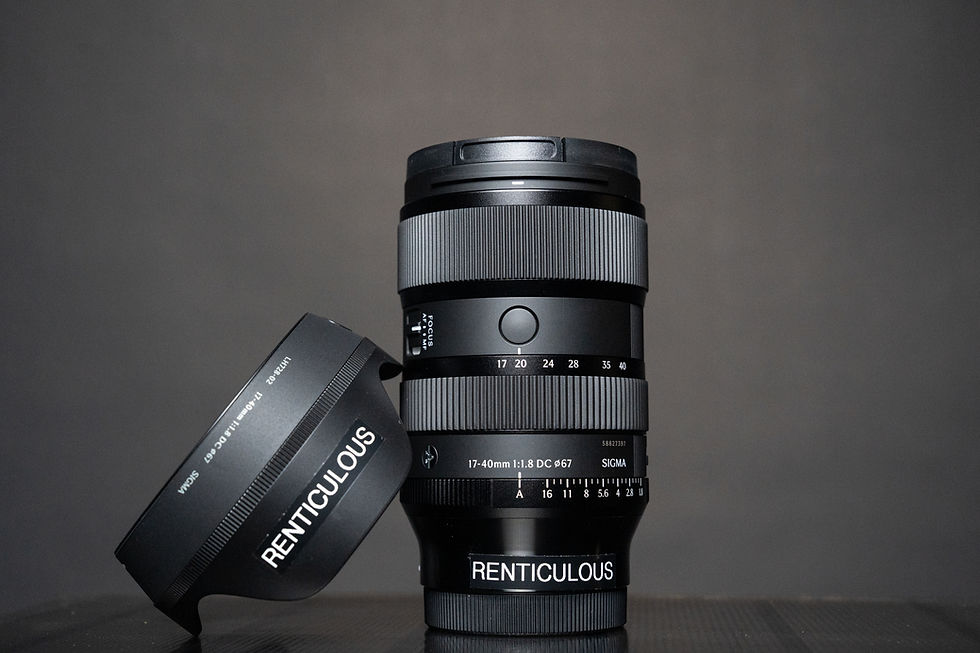All about gimbals
- renticuloussg
- Oct 6, 2020
- 3 min read
Steadicams have been introduced since the 70s, but in recent years gimbal have became popular in the consumers market, what used to be something mysterious and mind blowing is now a staple in the film industry. Anyone can now get a gimbal for phone from as low as $40-$50 SGD in the market. But with that being said, there are still tons of gimbal out there that are expensive and difficult to master, which is why we are here today to answer all the questions we are always thrown with!

To start off, gimbals are mainly used for standard DSLR/Mirrorless cameras, phones, action cameras and even on drones! They are usually compared with the size, power of the motor, payload and the easiness of operation.
Gimbal models like DJI Ronin S/SC and Zhiyun Crane 2s often requires full calibration and balancing of the gimbal and camera before you can start using it, which might be difficult to master for beginners. We often hear feedbacks about not being able to use the gimbal well/unable to balance/vibration problems, which are usually caused by poor balancing and lack of knowledge for operation. But fret not! We will be coming up with our very own tutorial soon to teach you how to start off with these gimbals!
Smaller gimbals like the Osmo Mobile 3/4, Zhiyun Crane M2 and Zhiyun Smooth Q2 are easier to start off with, but is limited to only mounting of phones, action cameras and compact cameras. Gimbals like these requires minimal calibration and balancing, which makes it ideal for first timers or anyone who ware keen on trying out simple movement with their phones. Brands like DJI allows you to connect to their very own application (DJI Mimo), which allows you to use build in features like time-lapse, subject tracking or even create stories with their templates!

So, which gimbal should you use for your camera or phone?
In this case, we usually group them by their payload.
For cameras (inclusive of lens) weighing less than 1.5kg, we recommend using smaller gimbals like the Zhiyun Weebill S, Crane Plus, DJI Ronin SC or the Feiyu AK2000, smaller cameras weighs lesser which are ideal for smaller gimbals. Setup like this are easy to handle, require less time to balance and are weight friendly.
For cameras (inclusive of lens) weighing 2kg and above like the BMPCC6K or Sony a7Riii/iv with G-master lenses, we recommend using gimbals like DJI Ronin S, Zhiyun Crane 2s/3s or the Feiyu AK4500, gimbals like this tend to be heavier, but the payload can go up to 6.5kg, which is suitable for cameras that are bulky or mounted with accessories like V mount batteries and external monitors. But be warned, your hands might break after using 10 minutes.
For mounting of phones, there are usually no restrictions with the model as most phone supported gimbals are able to take up the weight of any phones. Newer models like the Osmo Mobile 4 and Zhiyun Smooth Q2 support heavier phones better due to the improved motors and technology. Hybrid gimbals like the Zhiyun Crane M2 allows you to mount compact cameras, action cameras and phones depending on the mount you are using as well!

We hope this short blog answers some of your burning questions before using a gimbal, do look out for our next post as we will focus more on balancing and calibrating of the gimbal (probably with a video).















